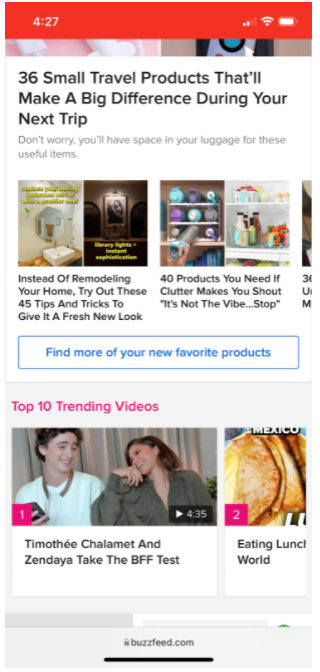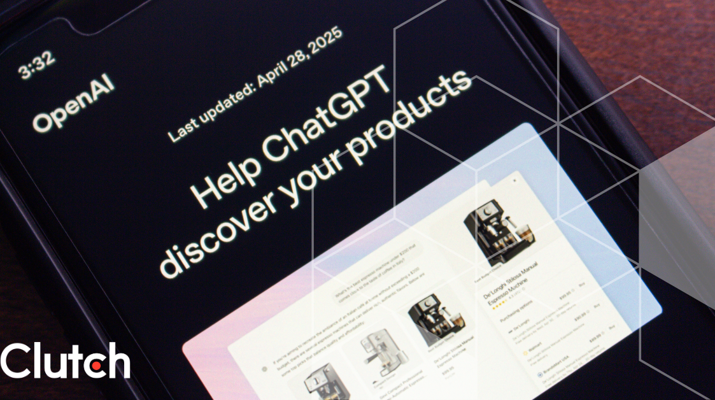

Updated January 2, 2025
Design, content, social media, and analytics can maximize audience engagement on your website.
Updated: February 24, 2022
Audience engagement is one of the primary goals of a website. Customers don’t just happen; they must be cultivated through solid marketing practices, e.g., the six to eight engagements it takes to convert leads into buyers.
Looking for a Web Design agency?
Compare our list of top Web Design companies near you
With 20 years of experience in digital marketing and as CEO of Pole Position Marketing, I’ve outlined 25 best practices to maximize audience engagement, broken down into four primary categories: design, content, social media, and analytics.
First impressions are critical. If getting visitors to your website is the first challenge, getting them to stay—and trust your brand—is the second. Here’s how to facilitate this:
Looking for a web designer? Check out our directory of top service providers.
Not only is website speed a search engine ranking factor, it’s critical to usability. If visitors can’t load your content, you’ve lost the opportunity to engage. It’s not your visitor's job to be patient; it’s your job to be fast by understanding website load times and tracking page speed.
Additional Reading: 'What Makes a Website Functional?'
It’s essential that a website functions seamlessly for mobile visitors. If your site isn’t optimized for mobile devices, you stand to lose a large and growing demographic of potential customers.
Buzzfeed provides various pieces of content for users – their website on mobile organizes that variety based on content type.

By organizing their content by type, Buzzfeed’s website is an example of how to engage audiences by putting what they want at the forefront in a clear way.
Ideally, visitors will land on the page that’s most relevant to their needs, but that won’t always happen. This makes it critical to give visitors clear and focused navigation options so they can self-direct to the content that suits them from any page.
Additional Reading: 'Website Redesign Checklist: 5 Trends to Consider'
Internal links give visitors another way (combined with navigation menus) to find information. Notice how the links in the audience engagement example below provide navigation options for visitors with different motivations.

This encourages website visitors to learn more about locations, menus, and catering options as they read.
By capturing your unique value proposition, or what distinguishes you from the competition, can help you stand out among competitors, so make sure to sell these differences on every page. Notice how the restaurant example above caters to Frank Sinatra fans both visually and textually.
What’s your goal in funneling visitors to your site? Whether it’s to buy, download, call, click, or any combination thereof, make sure it’s clear. Every visitor should know what you want them to do and how they can do it (via visible phone numbers, download buttons, etc.).
Engagement with your audience doesn’t have to end when they leave your site. Capturing email addresses gives you a second chance, allowing you to engage past visitors on a regular basis. Avoid producing spammy emails by focusing on the purpose behind the content.
Now that you’ve led visitors to your content, it’s time to deliver the value they came for. Here are a few steps you can take to maximize the value of your content:
In need of an agency to market your content? Check out our list of digital marketing agencies.
Titles and descriptions are a key component to establishing that first click, so it’s essential they initiate a desire to continue reading. The search result in the red box below is a good example that captures the incentives of booking a room.

Many people look for hotel rooms that are affordable, so travelers planning a trip to Myrtle Beach will be intrigued by the “guaranteed lowest prices” description.
Like titles and descriptions, headlines help visitors quickly absorb the valuable information from every page—and navigate to the appropriate content or action. They’re also useful in breaking up more complex content.
Read this: 'How to Create Landing Pages that Convert'
It’s not enough for your content to be right; it has to be engaging and appropriate for your specific audience. Whatever audience you're going after, make sure you write in a tone that fits both them and you.
Every page on your site should fulfill a distinct purpose—then direct visitors to the appropriate action. Ask yourself what you want visitors to get from each page and what you’d like them to do next. Then make sure every page delivers on that.
Good content is easy to read and understand. This depends not just on words, but how they’re presented. Breaking up content with paragraph headings, bullet points, images, and links can provide for a better reading experience. When visitors can’t appreciate the content, they tend not to engage.
Content isn’t just words but can include images, presentations, audio, and video. Using different forms of content can help you meet the learning and engagement preferences of your audiences, giving them more than one way to extract value from your content.
Additional Reading: '7 Corporate SEO Best Practices to Improve Visibility'
Another benefit of multimedia is repurposing content for other uses. A written blog post can easily be turned into a video, infographic, or presentation and vice versa. This allows you to get the most out of every concept and reengage audiences without being redundant.
Your story isn't just about where you came from; it’s also about where you're going. Make sure this is captured on your website’s about us page—and continue to build on this story organically.
Social media is a great platform for engagement, but it doesn’t have to live beyond the walls of your website. Here are some ways to use social media in tandem with your website content:
Need help with your social media? Hire one of our verified agencies.
Content should be easily shareable. Not only should you have share icons for visitors, but you should package your content so it’s ready to share. A good example of this is a “Click to Tweet” button, which the Content Marketing Institute often includes on its blog:

This allows website visitors to easily share content on Twitter, which will in turn influence others to visit the site and more audiences to engage.
Every comment you get is someone trying to engage with you. Likewise, every comment you don’t respond to is you shutting someone down. Whether on your blog or social channels, you should welcome comments from your audience and respond to them.
Being responsive to your audience is a prime example of how to strategically engage with your audience.
Similar to comments, reviews give customers a voice to engage, so be prepared to respond to positive and negative reviews on your site, social media platforms, and third-party sites.
Want to leave a review for a service provider on Clutch? Find out more here.
Remember, engagement is a two-way street, and you can’t always wait for someone else to start the conversation. Be proactive on social media, offering comments and sharing great content you find elsewhere. Learn to be a resource other people rely on.
Data is critical in understanding what is or isn’t working, so keep an eye on these metrics to adjust your content strategy accordingly:
Interested in market research? Find a service provider to assist your company.
How long do visitors typically stay on your pages? The time spent on each page will show you if visitors are satisfied with what they see and staying on the page long enough to engage.
Typically, the longer a visitor is on your site, the more engaged they are. Or it could be an indicator they aren’t finding what they want. Use this metric in conjunction with other metrics to get the full story.
You always want to work to keep visitors on your site rather than leaving before they take any action. Knowing which pages have the highest and lowest bounce rates (the rate at which visitors to that page leave your site) can help you determine what keeps your visitors reading and which pages to direct them to.
Additional Reading: 'How to Evaluate the Performance of Your Website'
The more pages your visitors view, the better your overall engagement. But eventually, you want them to convert. The popularity of your pages will help you determine how and where to include calls to action. The more engaged your audience is, the more likely they will become loyal customers.
Reviewing the pages with the most exits can help you identify what’s causing visitors to leave. Find out what it is and see if you can plug the hole to keep them flowing toward the goals.
Ultimately, these are the results you want, so review the commonalities of visitors who reach this point. If they are going through one particular page, maybe it’s a good idea to try to route more traffic through that page as well.
Remember: Engagement is what converts visitors into customers—and your site is responsible for nurturing that relationship.
Use the points above to ensure your design, content, social media presence, and analytics are all working together to maximize your engagement and increase your rates of conversion.

Stoney deGeyter is the author of The Best Damn Web Marketing Checklist, Period! and president of Pole Position Marketing, a results-driven web presence optimization and marketing agency established in 1998.


